Although every cat has its own personality, all cats have characteristics that some people find enduring while other find them off-putting.
Depending on the breed of cat you have, your cat can have a range of characteristics some of which might be natural while others might be derived from the environment.
Characteristics of Cat Personality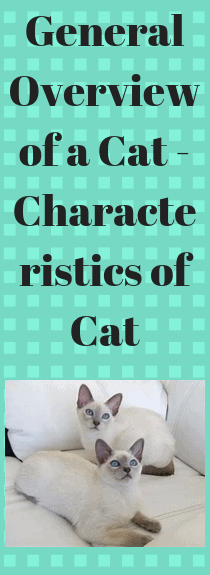
Cats have characteristics which resemble those of human beings. In fact, some of the personality traits are similar to those of human beings. Here are 5 general characteristics of a cat personality:
- Friendliness – this trait shows whether a cat is highly affectionate or prefers to be alone most of the time.
- Dominance – this is the tendency of a cat to either bully other cats or submit to them. When a cat dominates other cats, it means that the cat is bullying them and vice versa.
- Outgoingness – a cat can be curious, friendly, active or not interested in exploring new things. Either way, a cat can either be outgoing or not. This trait can be determined by the breed of the cat as well as the environment at which the cat lives in.
- Skittishness – this trait refers to how a cat is nervous or laid back. Some cats might be nervous while others might be relaxed at all times even when facing threating situations.
- Spontaneity – the trait is used to determine whether a cat is predictable or erratic in his behaviors. This can be determined by how the cat carried himself around at all times, whether he follows what he has been trained or you cannot even predict what he is going to do next.
Important Characteristics of Cats
- They are nocturnal- they mainly sleep during the day but active at night.
- They have acute hearing and good night vision.
- Cats usually climb and scratch vertical objects. You should provide scratching posts to minimize damage to your furniture.
- Male cats usually spray to mark their territory on both vertical and horizontal surfaces.
- Cats can eat all the time of the food is always available. Therefore, avoid overfeeding them because it can lead to obesity.
- A cat will never sweat because they do not have sweat glands.
- The normal body temperatures of a cat range from 100.5 to 102.5 degrees Fahrenheit.
- A cat’s heartbeat ranges between 110 and 140 heartbeats per minute.
- Cats have AB blood group and they can donate to other cats.
Physical Characteristics of Cats.
1. Skin and hair
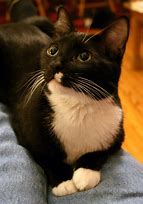 Feline skin is more sensitive than human skin. Therefore, if you are planning to groom your cat, you should choose the right products that are formulated for pets to avoid irritating your cat’s skin. Cat fur offers protection to the sun, insect bites, cold and scratches and to regulate body temperature.
Feline skin is more sensitive than human skin. Therefore, if you are planning to groom your cat, you should choose the right products that are formulated for pets to avoid irritating your cat’s skin. Cat fur offers protection to the sun, insect bites, cold and scratches and to regulate body temperature.
Cats have different types of hairs which are used for different functions:
- Guard hairs – they are coarse, long and thick. They insulate the body and improve the sense of touch in a cat
- Awn hairs – these are thinner hairs within the primary coat. They help in insulating and protecting the body
- Secondary hairs – they are the thinnest and the most numerous hairs in a cat. They make up the downy undercoat of cats to control the temperature
- Whiskers – these are long sensory hairs found on the face of the cat. They are mainly for sensory purposes.
2. Teeth and mouth
Cats are carnivores and hence their teeth are designed to tear and pierce the meat. They have different types of teeth which are used for different functions depending on their position in the mouth.
The incisors and canines are designed for grasping and tearing the meat while the premolars and molars grind the food into small pieces to make it easy for the cat to swallow.
3. Legs
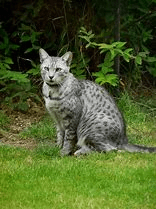 Cats have claws which are sharp and curved to make it easy when hunting or fighting for a territory. The claws are retractable to ease movement and use.
Cats have claws which are sharp and curved to make it easy when hunting or fighting for a territory. The claws are retractable to ease movement and use.
However, the legs of a cat are not very strong because they do not hunt large animals. Instead, the claws are only used to snatch or catch small preys e.g. birds and rats.
The muscles, tendons, ligament and the spine of a cat are very flexible thus making a cat an agile hunter.
Cats can leap, walk, run, jump, twist and even roll like a ball depending on the circumstances. This makes it very easy for cats to hunt or escape from their attackers.
Cat’s Characteristic Behavior
Cats have characteristic behaviors which set them aside from other pets. Some of these behaviors are:
- Scratching objects in the house
- Being active at night
- Marking their territory by urinating
- Purring when caressed or when happy
- Digging and covering their urine or stool in litter boxes
- Spending most of the time indoors
Some of these behaviors might differ from one cat to another but the bottom line is that most cats have such behaviors.
If your cat has certain behaviors you don’t like such as scratching your furniture, you are supposed to be supportive rather than scolding the cat. There are steps and ways that you can follow to help your cat develop a good behavior.
However, if you cannot do it yourself, you can seek help from an expert or research from relevant sources to get new ideas.
Cat Qualities in Humans
The research about cat behaviors and traits suggest that human beings and cats have similar traits. This research can be used to conclude that it is very easy for you to develop a long lasting relationship with your cat because you’ve canvassing traits. The five human traits related to that of cats include:
- Openness to experience – this refers to how open you are to trying new things or get interested with new objects.
- Extraversion – this refers to personal preference to others company or his own. Some people prefer being alone rather than spending time with other people.
- Agreeableness – this is the willingness to forgive others, understand them and the ability to be kind to other people.
- Conscientiousness – some people might know what they are looking for, willing to do and they do not need any supervision doing what they love. On the other hand, some people like being controlled at all times.
- Neuroticism – some people are calm and easy going while others are always worrying and nervous most of the time.
These personal traits are very similar and can be compared to that of your cat.
If you are planning to introduce a cat in your home, you need to learn more about cats so that you will have accumulated knowledge and experience on how to handle them. In addition, it will make it easy for you to choose the most ideal breed of cat.
General Overview of a Cat – Characteristics of Cat is an article that gives you the general information about a cat.
Description of a Cat
Cats are tiny, primarily carnivorous animals.
European wildcat catus is a member of the Felidae, widespread as a house pet, and valuable for killing mice and rats.
Like different members of the cat family, the true cat has retractable claws; keen hearing and smell; exceptional night vision; and a compact, muscular, and extremely supple body.
Cats possess glorious memory and exhibit goodly power for learning by observation and skill.
The natural generation of a true cat is about fifteen years.
There are an estimated 600 million house cats in the world.
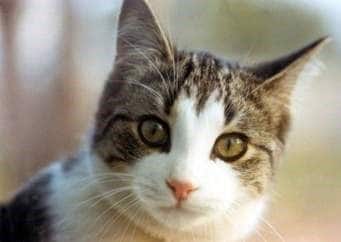
The body of a true cat is extraordinarily flexible. Its skeleton contains more than 230 bones (the human skeleton, although much larger, contains 206 bones).
Moreover, its pelvis and shoulders are more loosely hooked up to its spine than in most different quadrupeds.
Cool Characteristics of Cat
The cat’s nice jump ability and speed are due partly to its powerful muscular structure.
Its tail provides balance when jumping or falling.
The cat’s claws are designed for catching and holding prey.
The sharp, hooked, retractable claws are clad in a very soft, leatherlike pocket at the tip of every toe, and are extended for fighting, hunting, and ascent.
Moreover, it cat marks its territory by scratching and scenting trees or different objects; its claws leave visible scratch marks.
And also the scent glands on its paw pads leave a scent mark.
The cat’s teeth are designed for biting, but not for mastication.
Its powerful jaw muscles and sharp teeth enable the cat to deliver a killing bite to its prey.
The cat’s vision is exceptionally well custom-made for searching, particularly at nighttime.
It’s glorious night vision; in-depth peripheral vision; and sight, that permits it to accurately decide distances.
The cat’s sight isn’t nearly as good as that of humans; cats see movement way more simply than detail and are thought to envision solely a restricted vary of colors.
The cat’s hearing is extraordinarily sensitive.
It will hear a large variety of sounds, together with those within the unhearable vary.
Its ears are less sensitive to lower frequencies, which can make a case for why some domestic cats are more alert to feminine voices than to male voices.
The cat will flip its ears to concentrate on completely different sounds.
Smell Quality of a Cat
The cat features an extremely developed sense of smell, that plays an important role to find food and in reproduction.
Several of the social signals of domestic cats take the shape of scents; as an example.
Male cats will apparently smell a feminine cat that’s receptive to male cats from a distance of many meters or yards.
The cat’s sense of style is peculiarly specialized: it’s very little ability to detect sweetness.
However, is extremely sensitive to slight variations in the taste of water.
The cat’s tongue is roofed with rough protuberances, or papillae, that it uses to rasp meat from bones.
It additionally uses its tongue to groom itself.
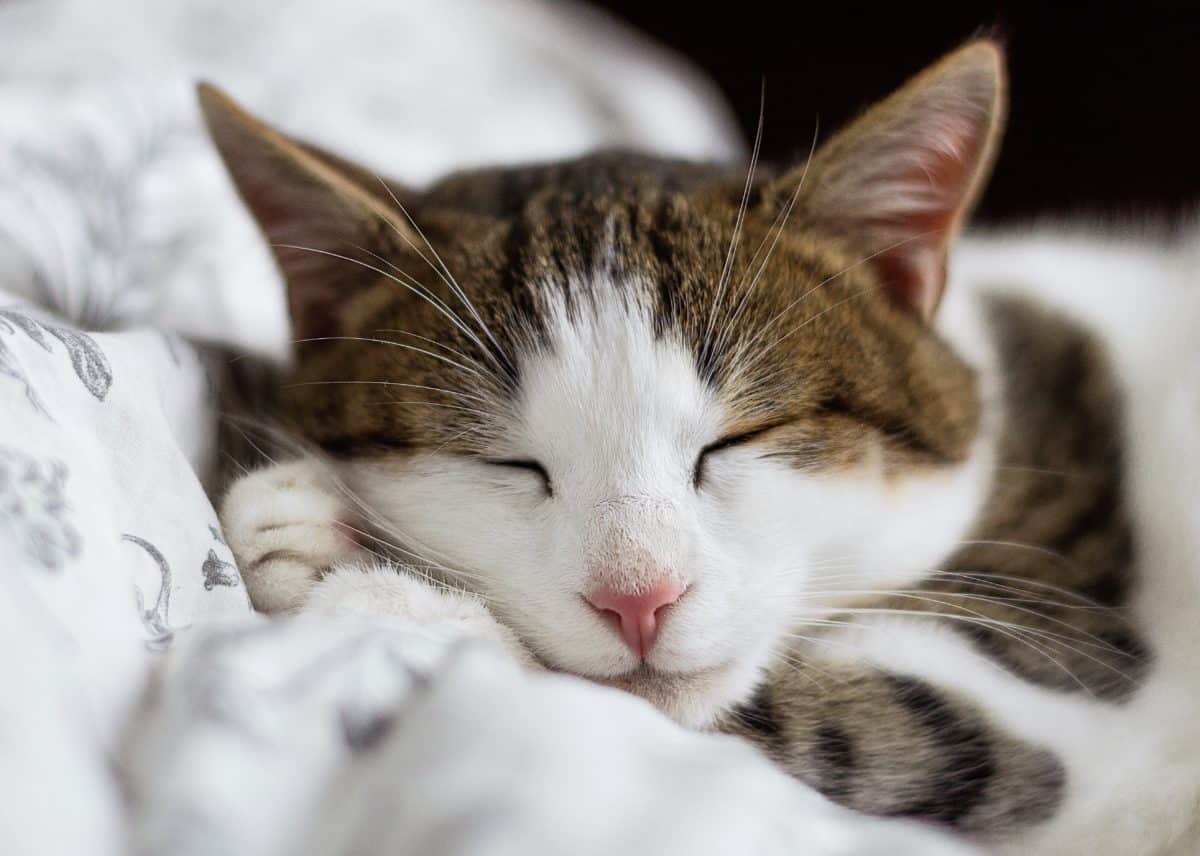
The cat’s whiskers, or vibrissae, are extraordinarily sensitive to the slightest bit and are used for testing obstacles and sensing changes within the atmosphere.
In extraordinarily dim lightweight, a cat might feel its way by using its whiskers.
Sounds of Cat
Cats create a particular set of vocal sounds.
The meow call is often created for humans, not for other adult cats.
It will also be low-pitched if the cat is agitated or high-pitched if the cat is happy or is welcoming someone.
The meow will be a requirement for food or for attention.
Mother cats use a Lionel Trilling kind of meow with their kittens.
Male cats caterwaul once encountering different males and once getting ready to mate with a feminine.
Females generally yowl after they are in heat to draw in males.
Hisses, screams, or growls indicate a cat is frightened or feels vulnerable.
Different cat sounds embrace chirps and chatters once probing for prey.
Purring is believed to be made by moving muscles within the larynx and within the diaphragm because the cat breathes in and out.
Though cats typically purr to indicate happiness, cats additionally purr after they are wounded or in distress.
Some analysis suggests the vibrations from purring might help heal scraped bones.
The true cat typically reaches pubescence at around 9 or 10 months of age.
Motherhood And Newborn of Cat
A sexually mature feminine cat goes into heat, or estrus, many times a year.
Throughout the physiological state, she is both receptive to and attractive to, male cats.
The gestation of the cat is about sixty-five days; the typical litter consists of four kittens.
Kittens are born blind, deaf, and helpless. Their eyes open at eight to ten days of age, and they begin to be weaned about six weeks after birth.
The domestic cat’s original coat color was in all probability grayish-brown with darker tabby stripes.
A color that gives glorious camouflage in a type of environments.
All different coat colours and patterns are the results of genetic mutations; as an example, solid coat.
The colours like black and blue are the results of a sequence that suppresses tabby stripes.
Black and Orange pigments of Cat
An orange coat is the result of a sequence that transforms black pigment to orange.
And a solid white coat is the results of a sequence that utterly suppresses all formation of pigment.
Two pigments, black and orange, form the premise for all coat colors within the trendy true cat.
These pigments are also combined with one another or with white (the absence of pigment).
One sequence, the O (Orange) sequence, determines whether or not a cat’s coat contains black or orange pigment.
The O sequence will be thought of as a switch that’s either on (orange) or off (black).
The sequence is found on the X chromosome, thus its inheritance is sex-linked.
Different Breeds of Cat
Many true cat breeds, together with the American state coon, Manx, Russian blue, and Siamese, began as a naturally occurring type of true cat native to a particular geographical area.
Others, like the range, are unnaturally created breeds, the results of generations of careful breeding for a desired look.
Some comparatively new breeds, together with the curly-coated Rex breeds, the bald-pated Sphynx, the fold-eared Scottish fold, and the curl-eared yank curl, began with a change and were then developed by selective breeding into a definite breed.
For each true cat breed, there is an official standard of perfection registered with completely different cat associations.
This will describe the perfect cat of that breed and its distinctive features.
Lists fascinating and undesirable characteristics, and mentions faults that, in a very cat show, may lead to penalty or disqualification.
As an example, within the Siamese breed normal, the eyes are represented as rounded and sloping toward the nose.
An inclination to squint is penalized, and crossed eyes are a disabling fault.
Breed standards disagree slightly from cat association to cat association, and not all cat associations acknowledge each breed.
To become recognized in a very explicit cat association.
A breed should first be accepted for probationary status by that association.
To become recognized for championship competition.
The breed should complete a rigorous set of requirements that differ from association to association.
Though cats have a name for being comparatively independent, domestic cats need love and attention from their house owners.
Foods of Cat
A balanced daily diet, like that provided by high-quality business pet food.
It is crucial for health and longevity, as could be a regular offer of water.
Cat care tips and tricks
Regular cleansing of litter pans is important to stop the disease.
Some cats can refuse to use a badly fouled litter pan. Cats’ claws ought to be cut often.
To stop damage to an article of furniture, cats that live indoors ought to be given a scratching post, ideally coated with a rough material like sisal rope.
Cats use their tongues to scrub their coats, and they commonly swallow any loose hair.
All cats, together with shorthairs, ought to be brushed weekly to get rid of loose hair.
This may facilitate forestall hairballs from forming in their stomachs.
A couple of longhaired breeds, like the Persian and also the range, need daily hair care to stop their long, soft fur from matting.
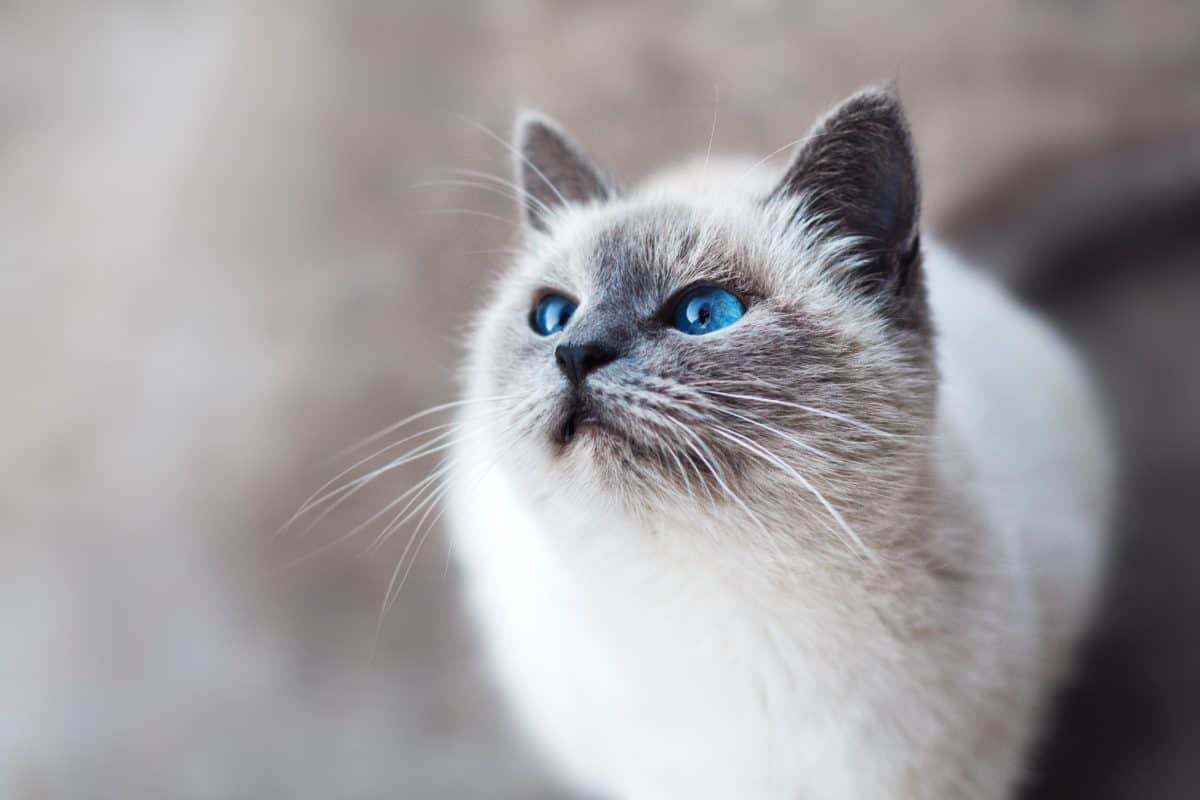
How to save cats from Destruction
Every year many thousands of unwanted domestic cats and kittens are destroyed because homes can not be found for them.
To avoid contributing to the present problem, a cat ought to be altered (surgically treated to create it incapable of reproducing).
Unless it’s a registered, pureblooded member of an accountable breeding program.
A feminine cat is unsexed (altered by removing the female internal reproductive organ and ovaries).
A male cat is castrated (altered by removing the testicles).
Cats that are altered are healthier and easier to live with.
Unaltered females may be vulnerable to female internal reproductive organ infections and sex gland cysts.
Unaltered cats of each sex might mark their territory by spraying urine.
Some veterinarians suggest neutering cats as young as twelve weeks of age.
Whereas others suggest waiting till the animal reaches sexual maturity (at six to 10 months of age).
Diseases of Cat
Current veterinary analysis indicates that early neutering has a very little negative impact on a cat’s health.
A low-quality diet, however, will cause serious tract issues.
Domestic cats are vulnerable to a range of infective agent and microorganism diseases.
Luckily, several common feline diseases can be controlled by a daily system of immunization.
Cats may suffer from external parasites such as fleas and mites, and from enteral parasites (worms).
Cats can contract a zoonotic disease from infected prey or different infected animals.
However, such instances are rare.
Upper metabolic process infections are a standard feline illness and may generally be fatal, particularly in young kittens.
Vaccines offer some protection against the subsequent higher metabolic process diseases: feline viral animal disease (FVR), feline calicivirus (FCV), and chlamydia (feline pneumonitis).
Panleukopenia (feline infectious enteritis) could be an extremely contagious, typically fatal malady characterized by an unforeseen onset and severe epithelial duct symptoms like expulsion and looseness of the bowels.
Vaccination is the sole effective way to control the malady.
Feline leukemia virus (FeLV) could be a fatal contagion that is spread by direct contact.
More diseases of Cat
A cat with feline leukemia might have a range of symptoms, together with general uneasiness, weight loss, anemia, and fever.
An infected cat might transmit the malady to different cats before it develops clinical symptoms itself. A biopsy will observe whether or not a cat has been infected.
Though a vaccinum is on the market, the foremost reliable way to stop a cat from getting feline leukemia is to keep it from coming back into contact with FeLV-positive cats.
Feline infectious peritoneal inflammation (FIP) is an inflammation of the serosa (lining of the abdomen).
Though FIP is contagious, some cats seem to develop a resistance to it. An infected cat is also an asymptomatic carrier.
Once a cat develops symptoms, the malady is invariably fatal. There’s no reliable biopsy for FIP, however, a vaccinum is currently available.
Cats can be successfully inoculated against several serious feline diseases.
Kittens ought to be inoculated against rhinotracheitis, calicivirus, panleukopenia, and, optionally, chlamydia.
Most veterinarians suggest a series of 2 or 3 inoculations, given every three weeks beginning at six weeks of age.
when twelve weeks of age, a kitten may be inoculated against zoonotic disease, feline leukemia, and feline infectious peritoneal inflammation.
Inoculations ought to be repeated annually to maintain immunity.
